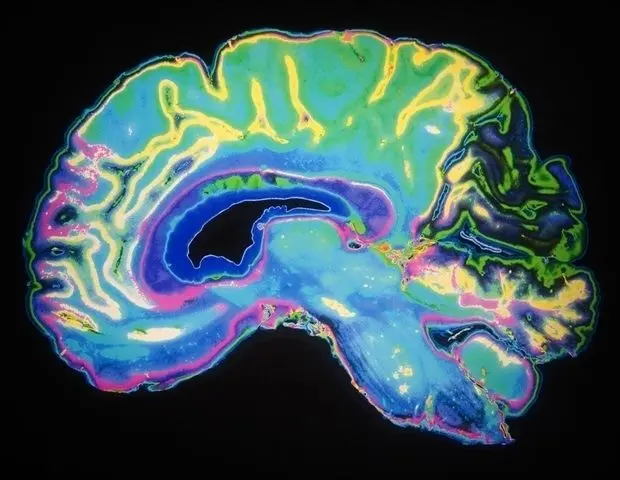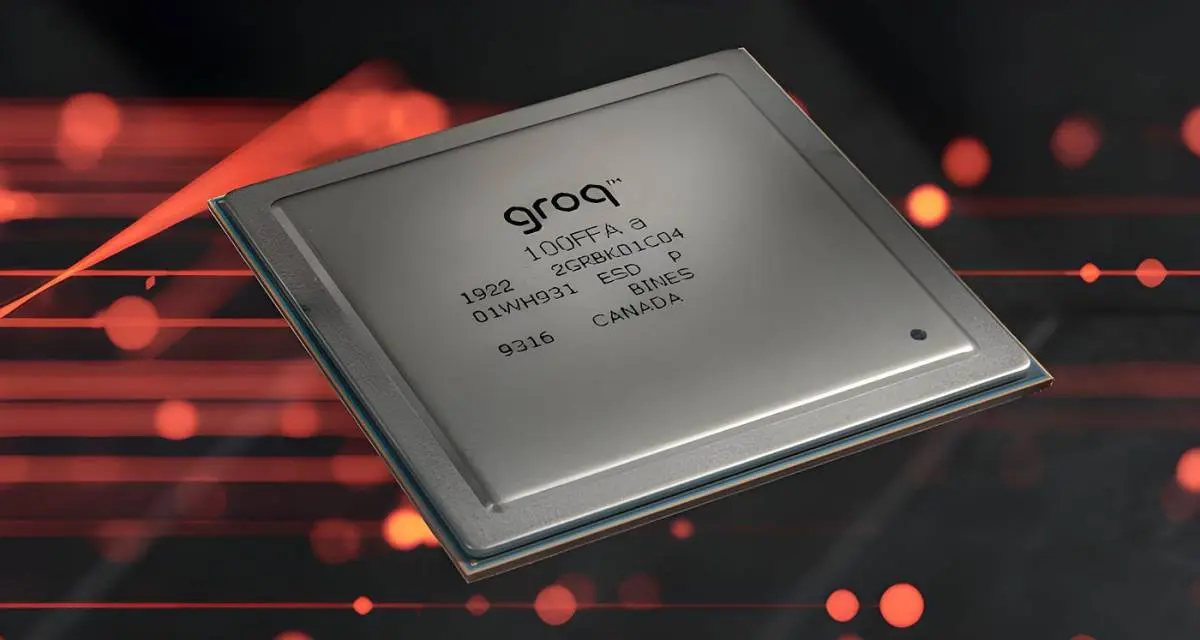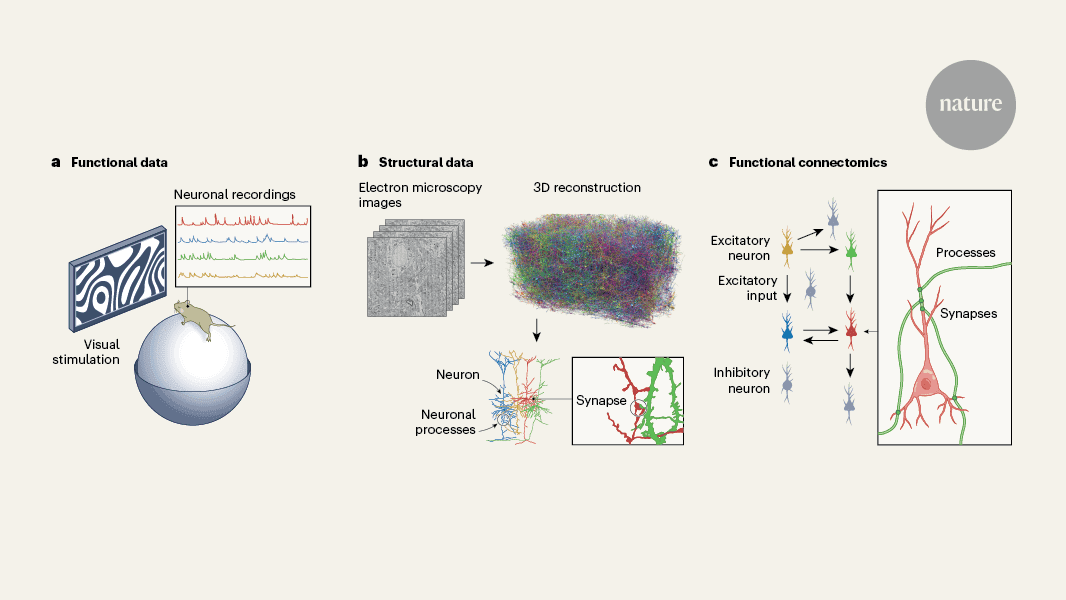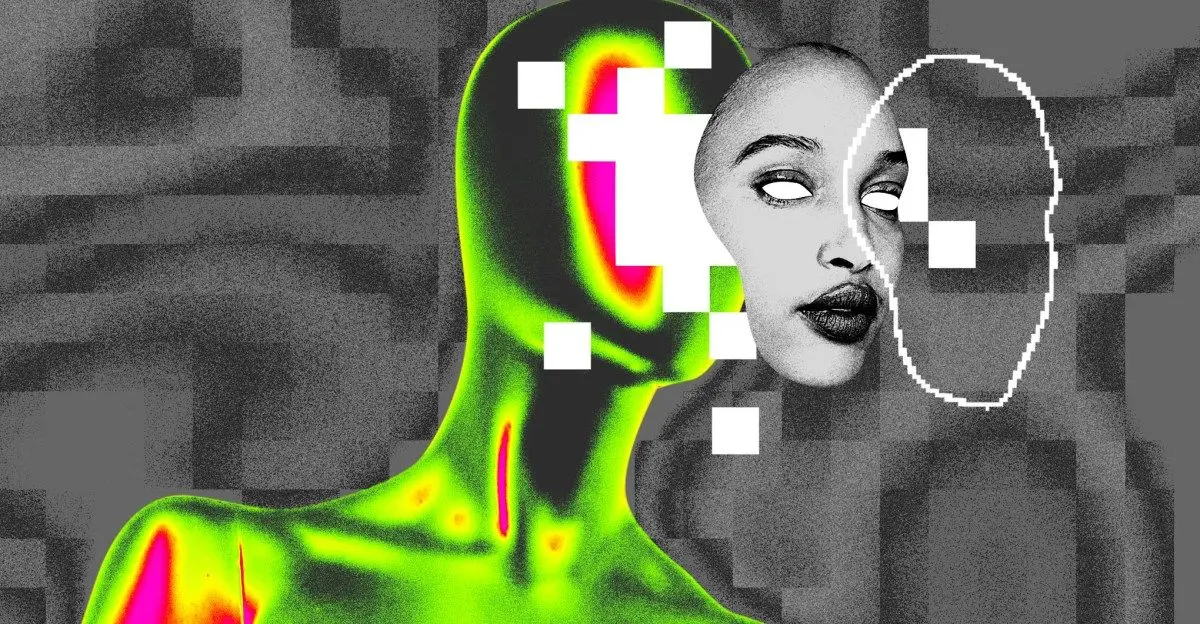Stanford-Led Team Develops Revolutionary Brain Imaging Technology with Implications for AI and Disease Research
3 Sources
3 Sources
[1]
Light-based technology for imaging brain waves could advance disease research
New tools and techniques that reveal how neuron-specific waves travel through the brains of mice in real time holds promise for understanding diseases such as epilepsy and Alzheimer's, and opens avenues for advances in neuroscience and AI. When electrical activity travels across the brain, it moves like ripples on a pond. The motion of these "brain waves," first observed in the 1920s, can now be seen more clearly than ever before thanks to instruments and techniques created by a Stanford-led team. The technology, described in the journal Cell, involves two ultra-sensitive optical instruments that can detect signals of genetically engineered proteins, known as "voltage indicators," revealing neuronal brain wave activity in mice. While limited to research animals, the advance has already shown its potential. Using these instruments, the researchers discovered three new types of brain waves moving in ways never previously observed. "We're getting a very broad view of waves propagating across the brain," said Mark J. Schnitzer, senior author and professor of biology and of applied physics in Stanford's School of Humanities and Sciences. "We can look at multiple brain areas at once and see the brain waves sweeping across the cortex, the brain's outermost layer of nerve tissue, with cell-type specificity." Unlike electrodes, which use electricity to detect individual spots of brain activity, the instruments developed by Schnitzer's team use optics, a light-based technology, to image brain waves as they travel in real time. They can also focus on waves tied to one or two specific neuron types. Scientists have been trying to understand brain waves ever since they were first identified in humans over a century ago by German physician Hans Berger, who used electrodes in an early version of an EEG (electroencephalogram). Researchers now know that abnormalities in these waves are associated with different forms of disease, including Parkinson's, Alzheimer's, epilepsy, and schizophrenia. It has remained challenging to discern which neuron types are driving which types of waves. This latest development could help solve that issue. It stems from over a decade of work on optical techniques called TEMPO first reported in a 2016 paper by a team including Schnitzer, who is also a professor of neurosurgery in Stanford's School of Medicine, and Michael Z. Lin, professor of neurobiology and of bioengineering in the School of Medicine. Lin is also co-author on the current study. In this study, the researchers demonstrated the use of two new TEMPO instruments that complement each other: a fiber optic sensor that is 10 times more sensitive than previous versions and can track the electrical activity in the brains of mice as they go about their normal activities; and an optical mesoscope that can provide an 8 mm-wide brain image and show neural activity across the majority of the mouse neocortex, the layer of the brain responsible for high-level functions such as perception and cognition. With this technology, the researchers were able to see several waves never before recorded, including two types of beta waves - higher frequency waves associated with alert mental activity - that travel at right angles from each other. They also discovered a theta wave - a lower frequency wave associated with memory processing - that traveled not just in one direction, as was previously known, but also backward. While it is not yet known what this new directional wave might indicate, one theory is that the theta wave might be "backpropagating," similar to a learning mechanism used by artificial intelligence models. "It seems the brain has an internal clock that synchronizes neural activity, but these traveling waves may also actively reorganize neural circuits across large distances, beyond just local connections," said co-lead author Radosław Chrapkiewicz, director of engineering in Schnitzer's lab. "This could play an important role in further bio-inspired AI models."
[2]
New tech could revolutionize neurodegenerative disease research and AI
Stanford UniversityJul 17 2025 When electrical activity travels across the brain, it moves like ripples on a pond. The motion of these "brain waves," first observed in the 1920s, can now be seen more clearly than ever before thanks to instruments and techniques created by a Stanford-led team. The technology, described in the journal Cell, involves two ultra-sensitive optical instruments that can detect signals of genetically engineered proteins, known as "voltage indicators," revealing neuronal brain wave activity in mice. While limited to research animals, the advance has already shown its potential. Using these instruments, the researchers discovered three new types of brain waves moving in ways never previously observed. We're getting a very broad view of waves propagating across the brain," said Mark J. Schnitzer, senior author and professor of biology and applied physics in Stanford's School of Humanities and Sciences. We can look at multiple brain areas at once and see the brain waves sweeping across the cortex, the brain's outermost layer of nerve tissue, with cell-type specificity." Mark J. Schnitzer, Senior Author and Professor, Stanford University Unlike electrodes, which use electricity to detect individual spots of brain activity, the instruments developed by Schnitzer's team use optics, a light-based technology, to image brain waves as they travel in real time. They can also focus on waves tied to one or two specific neuron types. Scientists have been trying to understand brain waves ever since they were first identified in humans over a century ago by German physician Hans Berger, who used electrodes in an early version of an EEG (electroencephalography). Researchers now know that abnormalities in these waves are associated with different forms of disease, including Parkinson's, Alzheimer's, epilepsy, and schizophrenia. It has remained challenging to discern which neuron types are driving which types of waves. This latest development could help solve that issue. It stems from over a decade of work on optical techniques called TEMPO first reported in a 2016 paper by a team including Schnitzer, who is also a professor of neurosurgery in Stanford's School of Medicine, and Michael Z. Lin, professor of neurobiology and of bioengineering in the School of Medicine. Lin is also co-author on the current study. In this study, the researchers demonstrated the use of two new TEMPO instruments that complement each other: a fiber optic sensor that is ten times more sensitive than previous versions and can track the electrical activity in the brains of mice as they go about their normal activities; and an optical mesoscope that can provide an 8 mm-wide brain image and show neural activity across the majority of the mouse neocortex, the layer of the brain responsible for high-level functions such as perception and cognition. With this technology, the researchers were able to see several waves never before recorded, including two types of beta waves-higher frequency waves associated with alert mental activity-that travel at right angles from each other. They also discovered a theta wave-a lower frequency wave associated with memory processing-that travelled not just in one direction, as was previously known, but also backward. While it is not yet known what this new directional wave might indicate, one theory is that the theta wave might be "backpropagating," similar to a learning mechanism used by artificial intelligence models. "It seems the brain has an internal clock that synchronizes neural activity, but these travelling waves may also actively reorganize neural circuits across large distances, beyond just local connections," said co-lead author Radosław Chrapkiewicz, director of engineering in Schnitzer's lab. "This could play an important role in further bio-inspired AI models." More research needs to be done to understand the implications of these findings, but the new technology will likely open up many avenues for neuroscience as well as development of artificial intelligence. "There are a lot of very important applications in the field of neuroscience for understanding pathology and different dynamics in the brain," said research scientist Simon Haziza, the study's lead author. "We are just scratching the surface." Stanford University Journal reference: Haziza, S., et al. (2025) Imaging high-frequency voltage dynamics in multiple neuron classes of behaving mammals. Cell. doi.org/10.1016/j.cell.2025.06.028.
[3]
New tech for imaging brain waves could advance disease research, AI
When electrical activity travels across the brain, it moves like ripples on a pond. The motion of these "brain waves," first observed in the 1920s, can now be seen more clearly than ever before thanks to instruments and techniques created by a Stanford-led team. The technology, described in the journal Cell, involves two ultra-sensitive optical instruments that can detect signals of genetically engineered proteins, known as "voltage indicators," revealing neuronal brain wave activity in mice. While limited to research animals, the advance has already shown its potential. Using these instruments, the researchers discovered three new types of brain waves moving in ways never previously observed. "We're getting a very broad view of waves propagating across the brain," said Mark J. Schnitzer, senior author and professor of biology and applied physics in Stanford's School of Humanities and Sciences. "We can look at multiple brain areas at once and see the brain waves sweeping across the cortex, the brain's outermost layer of nerve tissue, with cell-type specificity." Unlike electrodes, which use electricity to detect individual spots of brain activity, the instruments developed by Schnitzer's team use optics, a light-based technology, to image brain waves as they travel in real time. They can also focus on waves tied to one or two specific neuron types. Scientists have been trying to understand brain waves ever since they were first identified in humans over a century ago by German physician Hans Berger, who used electrodes in an early version of an EEG (electroencephalography). Researchers now know that abnormalities in these waves are associated with different forms of disease, including Parkinson's, Alzheimer's, epilepsy, and schizophrenia. It has remained challenging to discern which neuron types are driving which types of waves. This latest development could help solve that issue. It stems from over a decade of work on optical techniques called TEMPO, first reported in a 2016 paper by a team including Schnitzer, who is also a professor of neurosurgery in Stanford's School of Medicine, and Michael Z. Lin, professor of neurobiology and of bioengineering in the School of Medicine. Lin is also co-author on the current study. In this study, the researchers demonstrated the use of two new TEMPO instruments that complement each other: a fiber optic sensor that is ten times more sensitive than previous versions and can track the electrical activity in the brains of mice as they go about their normal activities; and an optical mesoscope that can provide an 8 mm-wide brain image and show neural activity across the majority of the mouse neocortex, the layer of the brain responsible for high-level functions such as perception and cognition. With this technology, the researchers were able to see several waves never before recorded, including two types of beta waves -- higher frequency waves associated with alert mental activity -- that travel at right angles from each other. They also discovered a theta wave -- a lower frequency wave associated with memory processing -- that traveled not just in one direction, as was previously known, but also backward. While it is not yet known what this new directional wave might indicate, one theory is that the theta wave might be "backpropagating," similar to a learning mechanism used by artificial intelligence models. "It seems the brain has an internal clock that synchronizes neural activity, but these traveling waves may also actively reorganize neural circuits across large distances, beyond just local connections," said co-lead author Radosław Chrapkiewicz, director of engineering in Schnitzer's lab. "This could play an important role in further bio-inspired AI models." More research needs to be done to understand the implications of these findings, but the new technology will likely open up many avenues for neuroscience as well as the development of artificial intelligence. "There are a lot of very important applications in the field of neuroscience for understanding pathology and different dynamics in the brain," said research scientist Simon Haziza, the study's lead author. "We are just scratching the surface." Schnitzer is also the Anne T. and Robert M. Bass Professor in the School of Humanities and Sciences, as well as a member of Bio-X and the Wu Tsai Neurosciences Institute. Schnitzer credits co-authors Vasily Kruzhilin, a Stanford doctoral student in applied physics, for developing the novel computational analysis necessary for sensitively extracting the voltage signals, and biology research specialist Yanping Zhang with developing the mouse models.
Share
Share
Copy Link
A new light-based technology for imaging brain waves in mice, developed by Stanford researchers, offers unprecedented insights into neural activity and holds promise for advancing neurodegenerative disease research and AI development.
Breakthrough in Brain Wave Imaging Technology
A Stanford-led research team has developed a revolutionary light-based technology for imaging brain waves, offering unprecedented insights into neural activity. The new technique, described in the journal Cell, uses ultra-sensitive optical instruments to detect signals from genetically engineered proteins called "voltage indicators" in mice brains
1
.
Source: Medical Xpress
Advanced Instrumentation and Techniques
The technology employs two complementary TEMPO (Transmitted Excitation and Multiplexed emission for Photometry and Optogenetics) instruments:
- A fiber optic sensor, ten times more sensitive than previous versions, capable of tracking electrical activity in mice brains during normal activities.
- An optical mesoscope that provides an 8 mm-wide brain image, showing neural activity across most of the mouse neocortex
2
.
Unlike traditional electrodes that detect individual spots of brain activity, these instruments use optics to image brain waves in real-time, focusing on waves tied to specific neuron types.
Groundbreaking Discoveries
Using this technology, researchers have observed several previously unrecorded brain wave patterns:
- Two types of beta waves (associated with alert mental activity) traveling at right angles to each other.
- A theta wave (linked to memory processing) that travels both forward and backward, potentially "backpropagating" similarly to learning mechanisms in AI models
3
.
Related Stories
Implications for Disease Research and AI Development

Source: News-Medical
The ability to discern which neuron types drive specific wave patterns could significantly advance the understanding of neurological disorders such as Parkinson's, Alzheimer's, epilepsy, and schizophrenia. Abnormalities in brain waves are associated with these conditions, and this new technology may help unravel their complexities.
Moreover, the discovery of the bidirectional theta wave suggests potential applications in artificial intelligence. Radosław Chrapkiewicz, co-lead author and director of engineering in Schnitzer's lab, noted, "It seems the brain has an internal clock that synchronizes neural activity, but these traveling waves may also actively reorganize neural circuits across large distances, beyond just local connections. This could play an important role in further bio-inspired AI models"
1
.Future Prospects
While the current research is limited to mice, the potential applications in neuroscience and AI development are vast. Simon Haziza, the study's lead author, emphasized, "There are a lot of very important applications in the field of neuroscience for understanding pathology and different dynamics in the brain. We are just scratching the surface"
2
.
Source: Stanford
As researchers continue to explore the implications of these findings, this new technology is expected to open up numerous avenues for advancing our understanding of brain function, disease mechanisms, and the development of more sophisticated AI systems inspired by biological neural networks.
References
Summarized by
Navi
[3]
Related Stories
Recent Highlights
1
Nvidia drops $20 billion on AI chip startup Groq in largest acquisition ever
Business and Economy

2
Meta acquires Manus for $2 billion, adding revenue-generating AI agents to its platforms
Business and Economy

3
China proposes world's strictest AI chatbot rules to prevent suicide and emotional manipulation
Policy and Regulation






